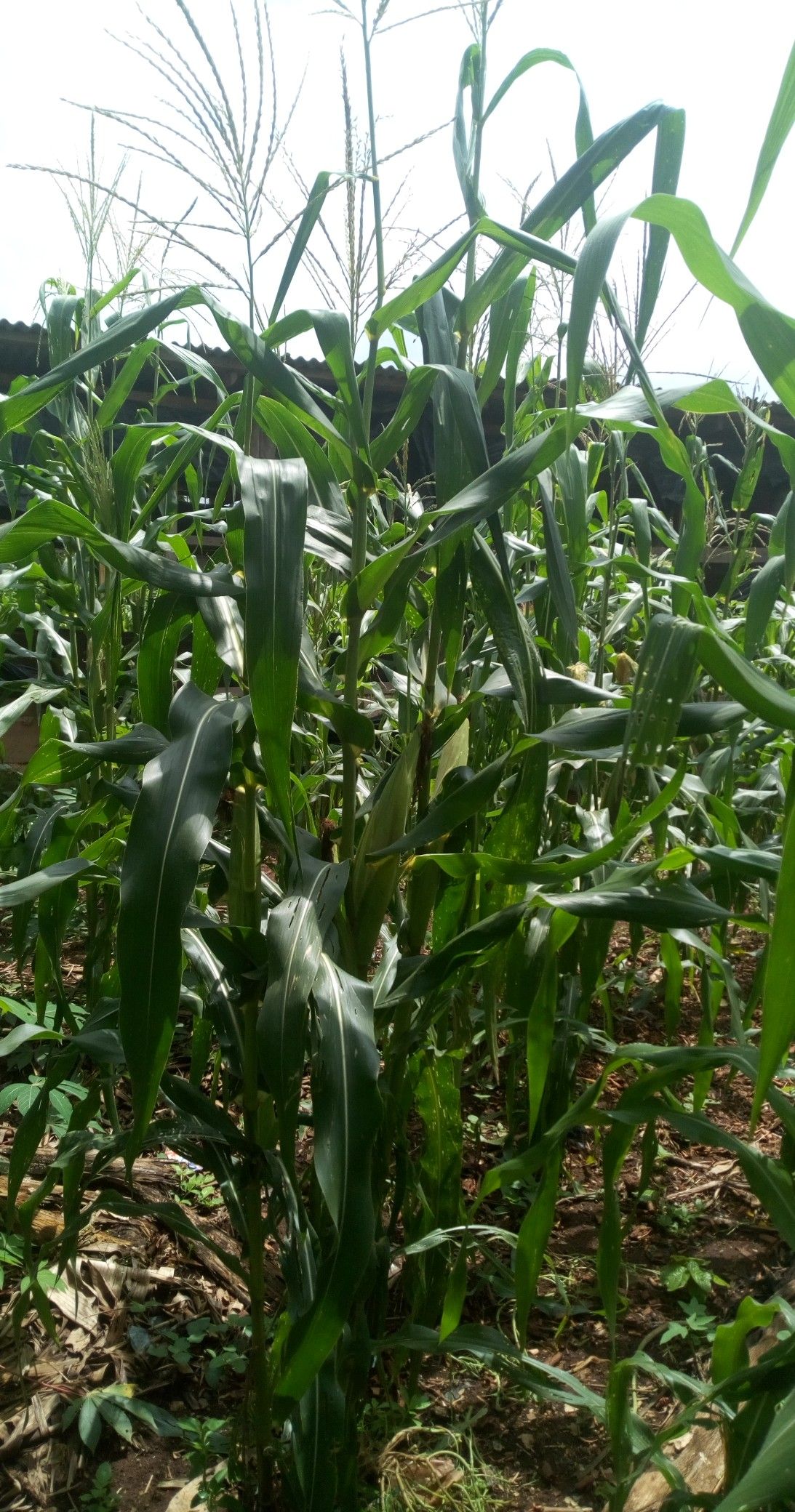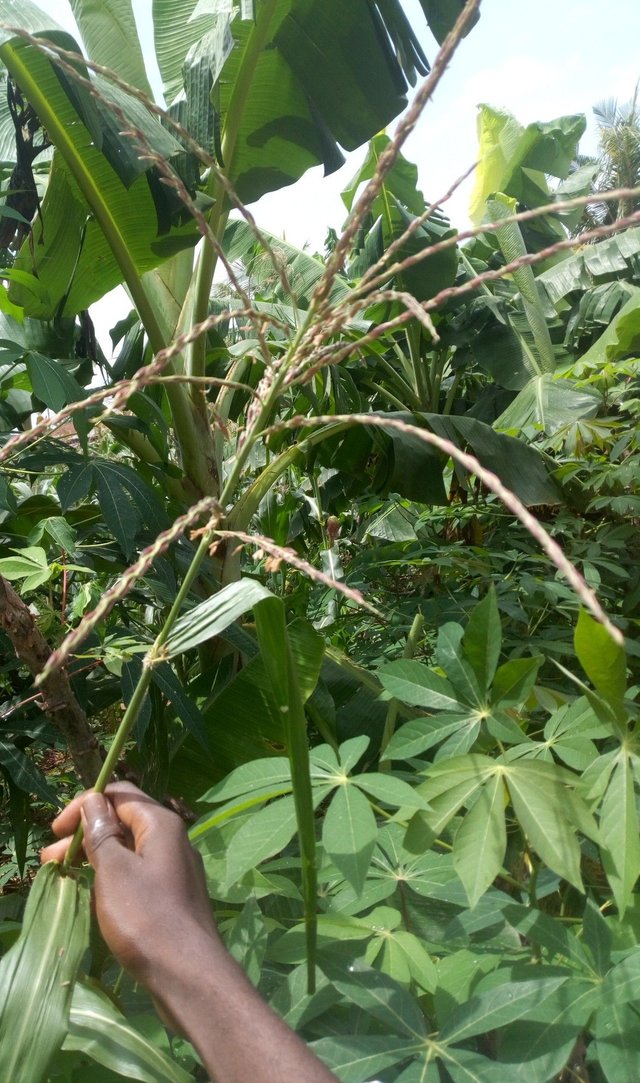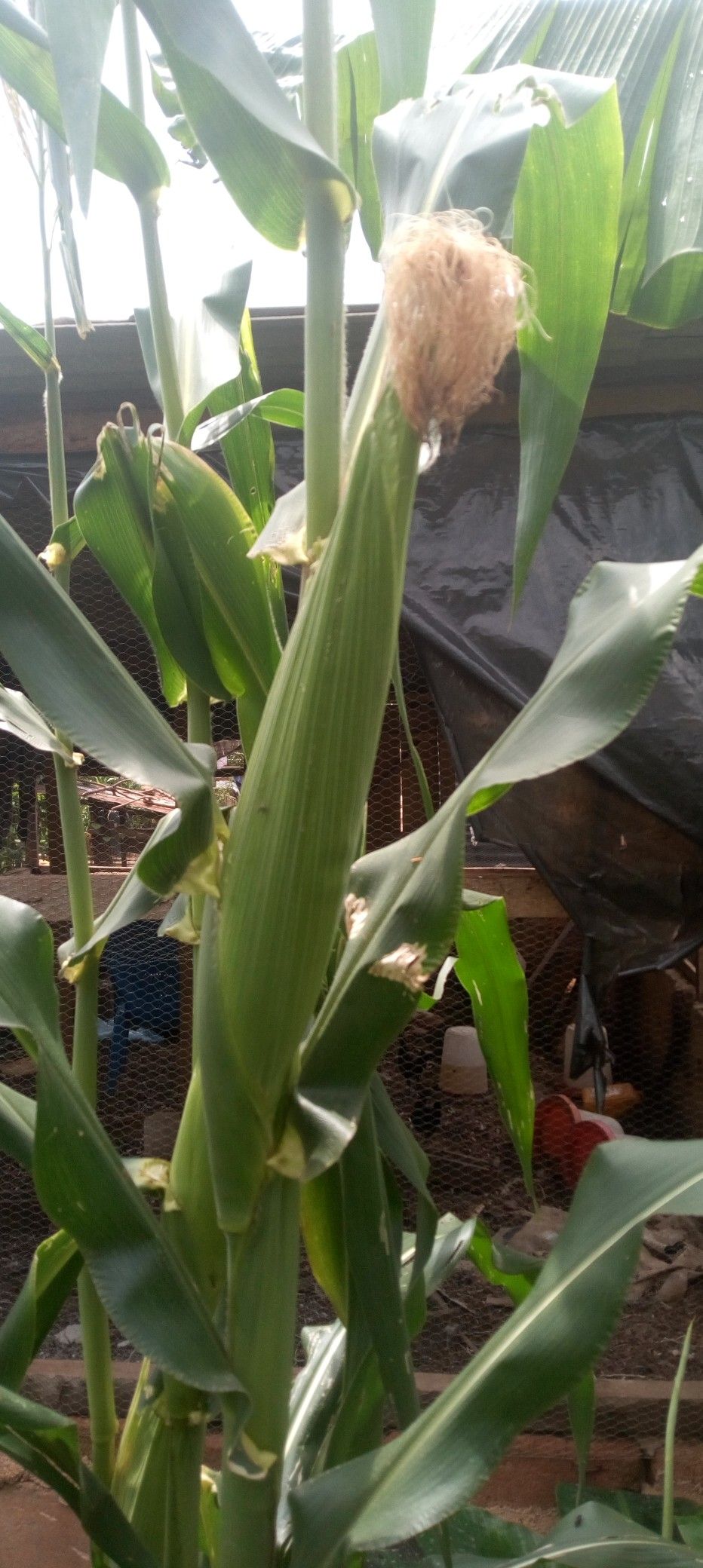What you need to know about maize plant
Introduction
Maize plant is the most cultivated cereal in the world. As statistics shows that more than 300 million people in Africa depend on maize as their main crop.There are 50 different types of maize cultivated throughout the world l. Maize production in Africa is affected by different threats such as weed, bacteria, insect nematode and virus.
 image of full grown maize plant snapped by me
image of full grown maize plant snapped by me
The botanical name of maize is Zea mays. The origin of maize can be traced to mexico about 10,000 years ago in the Tehuacan valley. It was introduced into Africa in the 16th century by the Portuguese.
Common Hybrid of maize in Africa
- Imazapyr-resistant hybrid maize
- Insect-resistant maize varieties
1. Imazapyr-resistant hybrid maize
This was developed by The International Maize and Wheat Improvement Center (CIMMYT), the Weizmann Institute of Science, the Kenya Agriculture Research Institute and the company BASF developed an herbicide-resistant maize variety, StrigAway, which is able to decrease Striga infestation in the field.
2. Insect resistant maize varieties
This maize hybrid have resistance to stem borers and post-harvest insect pests it is determined by plant genes. Morphological factors such as large leaf fiber, surface wax and high hemicellulose content have been linked with resistance against stemborers. Multiple borer-resistant maize plants have tougher leaf tissues due to thick epidermal cell walls that prevent larvae from feeding.
Parts of a maize plant
Root- Maize contains both adventitious and brace roots. The brace roots form above ground after plant start growing. Brace roots are important in reducing lodging. If the plant is droughted, these roots may not form properly.
Stem- Maize have a single stem.
Leaves- A maize plant contain 16-22 leaves. Leaves form at each node and alternate (i.e., the leaves appear on opposite sides of the plant)
Tassel-The tassel forms at the highest of the plant and provides the pollen for fertilizing the ear (cob).
Flowering- Maize usually forms a single ear ( or cob). In some cases it might contain two cobs. The silk is an assemblage of tubes that run from each potential grain on the ear. The pollen lands on each silk and fertilizies the grain, cob has a height of 15-39cm.

maize stem containing male flower held by me
Seed- the seed of maize(maize grain) has a weight of 30-50g.
 maize stalk, ear and silk
maize stalk, ear and silk
Steps in cultivating maize
Getting a suitable land
Maize crop does well in a sandy or loamy soil which is well drained, non water logged. The land should have a flat landscape and have great access to sunlight. It should be ensured that trees are absent in the land where maize will be planted as they will take much of the received sunlight and overshadow the maize plant.
Laborers should be hired to prepare the land for planting maize seed. They weed the land, till the top soil to ensure the soil is loose enough to allow the land to preserve the seed.
Choosing the maize variety to be planted
It should be ensured that the right variety of maize is chosen so as to get high return/yield. Maize seed has different duration at which they grow and mature. While some mature in 80-90days, others mature in 110-120days.
Apply fertilizer on the land
The degree of fertility of the soil will determine whether fertilizer will be used or not. If high yield is expected fertilizer should be used. N.P.K 15:15:15 is most often used.
Plant at the right time
Maize should be planted after rain has fallen 2-3 times. Planting during this period ensure rapid growth.
Weed, pest and disease control
Maize crop should be protected from pest, weed and diseases so as to ensure high productivity. Pesticides and herbicide should be used to control pest and disease.
Harvesting the maize crop
The condition that favours high yoeld of harvest are acess sunlight, rainfall, weed, pest and disease control.
Uses and importance of maize
- It is used in making corn meal(when it is dried and grinded)
- It is used in making corn flour which is a replacement of wheat flour used in making corn bread.
- It is used to make a local dish called masa
- It is used to make corn flakes, an important breakfast cereal.
- It is used in making salad (sweetcorn).
- It can be used in making livestock feed.
- The maize cob can be boiled or roasted and eaten.
Challenges of maize farming in Africa
1). Absence of experience
2). Monetary Constraints:
High loan fees.
3). Storage Constraints:
Poor storage method
- Lack of preservation skill after harvest.
- Weevil damage.
- Rodents damage.
- Burglary.
4). Farm Inputs Constraints:
High cost of obtaining farm inputs.
5). Accessibility Constraints:
Bad/Inaccessible roads.
Poor market facilities.
6). Marketing Constraints:
Price Instability/fluctuation.
Lack of ready market.
Presence of middlemen.
Imported maize.
Competition.
REFERENCE
- Plant biology text
- Wikipedia
- Encyclopedia of food and nutrition
Thanks for reading through
All images used are original as they were taken by me with infinix note 4 phone
Feel free to ask any question in comment will respond in due time
.gif)
thanks to @rocking-dave for the gif